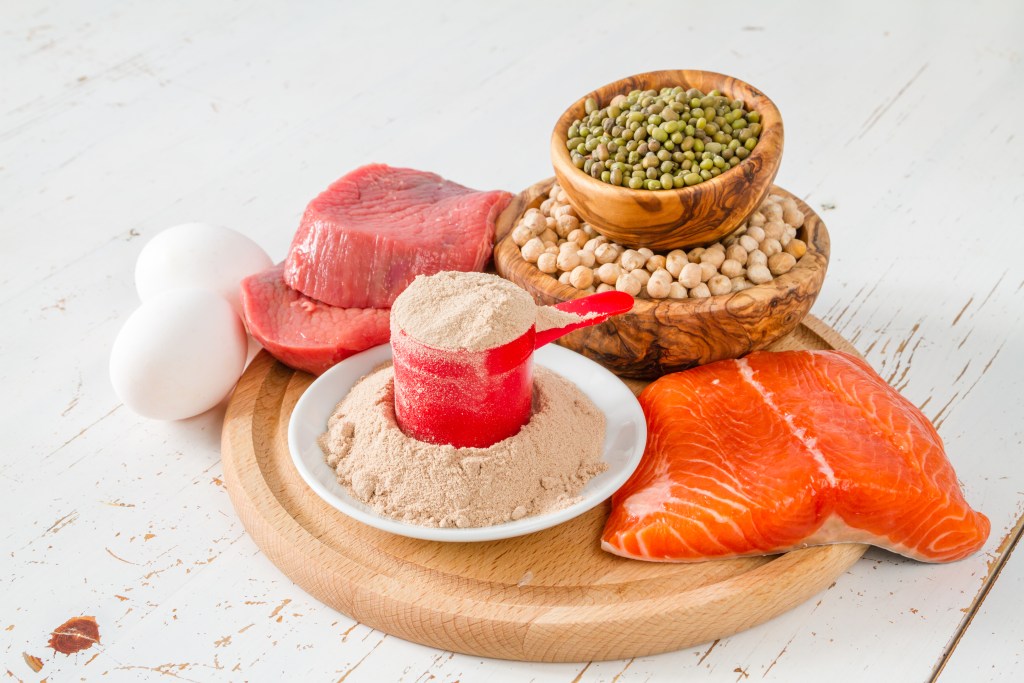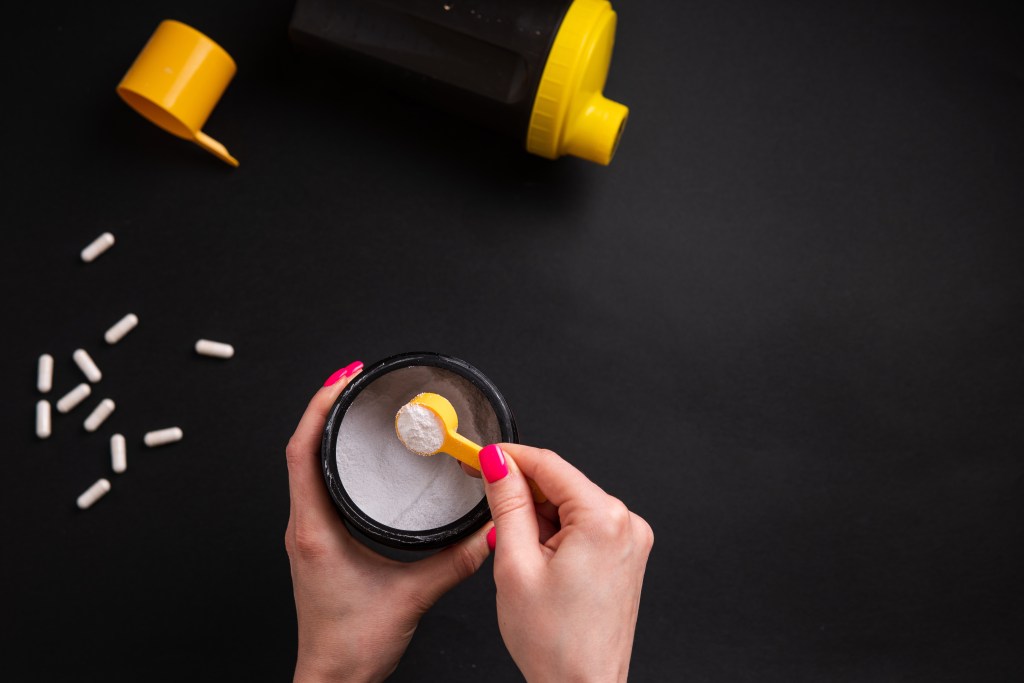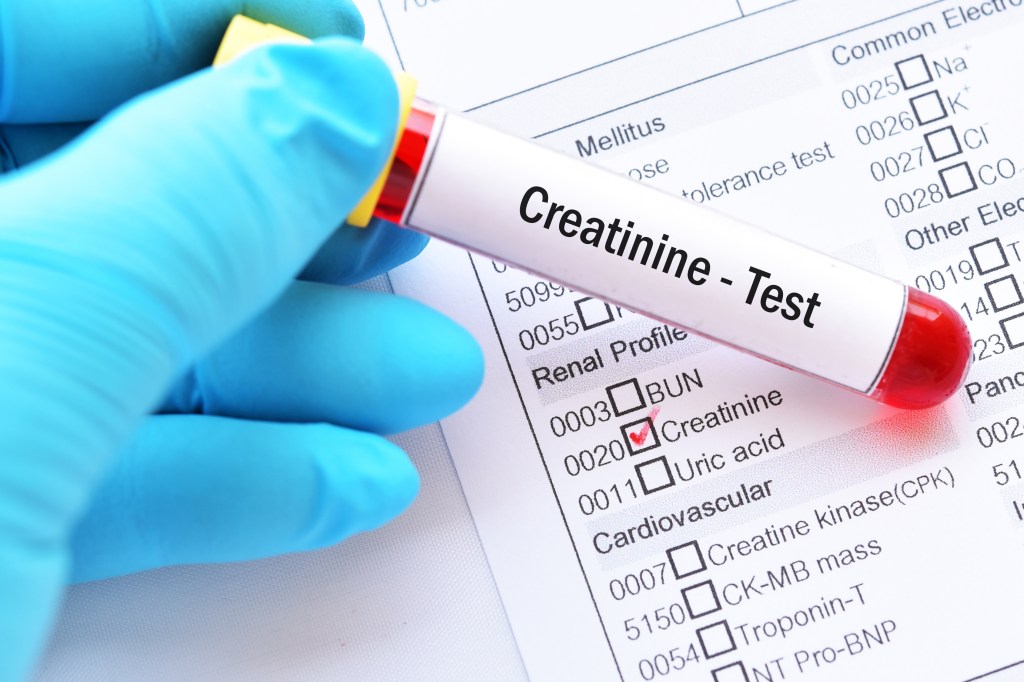Creatine is an amino acid complex with several health benefits. It promotes neuronal function and boosts physical performance by recycling adenosine triphosphate (ATP)–the primary energy source of skeletal muscles.
Discover five foods high in creatine you should eat regularly to promote muscle gain and support brain health.
What is creatine?
Creatine is an organic compound comprising the amino acids arginine, glycine, and methionine. It’s synthesized in muscles and stored as creatine phosphate.
Creatine phosphate plays an essential role in muscle contractions and serves as a quick energy source, especially during short bursts of high-intensity activities such as sprinting and weightlifting.
Because of its role in skeletal muscle function, focusing on creatine intake has become increasingly popular among weight lifters and endurance athletes.
Watch the video below to learn about creatine’s benefits for muscle function and recovery.
Five foods high in creatine
Creatine is naturally produced and stored in muscle tissue and can be found in various animal products, including most cuts of red meat, poultry, and fish.
Here are five natural food sources of creatine.
1. Red meat
Red meats such as beef, veal, lamb, venison, and rabbit are excellent natural creatine sources.
According to research published in Nutritional Supplements in Sports and Exercise, a six-ounce (170-gram) serving of beef contains around 750 milligrams of creatine.1
2. Fish and seafood
Fish, especially herring, salmon, and tuna, are rich in natural creatine.
A six-ounce serving of herring can provide as much as 1.7 grams of creatine, making it one of the best food sources of this performance-boosting compound.
3. Poultry
While chicken, turkey, fowl, and duck contain less creatine than beef and fish, regularly eating poultry can significantly contribute to overall creatine intake.
A six-ounce serving of chicken breast contains around 450 milligrams of creatine.
4. Pork
Pork is another excellent source of creatine, providing 650 milligrams per six-ounce serving of pork tenderloin.
5. Dairy products
Dairy products, including milk, yogurt, and cheese, also contain natural creatine, although in significantly smaller amounts than meat, poultry, and fish.
However, parmesan cheese is an exceptionally rich source of creatine, containing around 2.9 grams per 3.5-ounce (100-gram) serving.

Vegan sources of creatine
Creatine is mainly found in the muscle meat of animal products, and many plant-based foods are low in methionine, glycine, and arginine, the building blocks for creatine.
This leaves vegans and vegetarians at risk of low creatine stores.
A study published in Medicine and Science in Sports and Exercise found that vegans tend to have significantly lower creatine muscle levels than omnivores or those following a carnivore diet.2
However, consuming plenty of vegan plant-based protein sources can help you obtain a wide range of amino acids, including those necessary to generate creatine.
Here are ten vegan sources of amino acids needed for creatine synthesis:
- Pumpkin seeds
- Sesame seeds
- Walnuts
- Almonds
- Watercress
- Spinach
- Asparagus
- Spirulina
- Chickpeas
- Legumes

Benefits of creatine
Creatine has gained increasing popularity due to its performance-enhancing properties and may be beneficial in supporting healthy brain function.
Here are four creatine benefits.
1. Enhanced muscle strength and power
Creatine can increase the body’s capacity to perform short-term, high-intensity activities by recycling ATP, an electrically charged molecule needed for muscle contractions.
ATP recycling helps maintain energy production within muscle cells, which supports high-intensity exercises and may prolong endurance.
2. Promotes muscle gain
Creatine has been found to draw water into muscle cells, which contributes to muscle growth and improved muscle volume.
In addition, maintaining adequate creatine levels, especially when combined with resistance training, stimulates protein synthesis needed for building and maintaining muscle mass.
3. Faster exercise recovery
Creatine is a recovery nutrient that has been found to reduce muscle damage and inflammation after intense workouts.
Creatine also helps replenish ATP in muscle cells post-workout, which promotes muscle repair and stimulates muscle fiber formation and muscle mass gain.
4. Neuroprotective effects
Research published in Sports Medicine found that creatine may be beneficial for brain function and supporting a healthy central nervous system.3
“The brain has an incredibly high rate of metabolic processes that constantly require ATP,” explains Dr. Berg. “Creatine’s ability to increase ATP concentrations may explain its potential benefits for cognitive function and neuronal health.”
There is also evidence that creatine may promote balanced neurotransmitter levels needed for synaptic function and communication between brain cells.

How much creatine do you need?
A study published in The Journal of the International Society of Sports Nutrition states, “Creatine stores can generally be maintained by ingesting 3 to 5 grams daily.”4
The body produces 1 to 2 grams of creatine per day, and most people obtain around one gram from food sources, which may be enough to maintain adequate muscle stores.
However, in cases of low creatine stores, a significantly higher intake may be needed to help restore and maintain optimal levels within muscle tissue.

Creatine vs. creatinine
You may have heard of creatine and noticed creatinine listed as a marker on metabolic blood panels–so what’s the difference?
Creatine is a functional amino acid compound that helps replenish energy in muscle cells. Creatinine, on the other hand, is a metabolic waste product of creatine breakdown.
Creatine phosphate replenishes energy by donating a phosphate group to adenosine diphosphate (ADP), which generates ATP and creatinine.
The kidneys filter creatinine from the bloodstream and excrete it via the urine, making it a helpful blood marker that’s used to evaluate kidney function and diagnose stages of kidney failure.
What causes high creatinine?
Creatinine is excreted through the kidneys, and high creatinine levels can indicate kidney damage or an accelerated breakdown of muscle tissue due to intense and prolonged exercise, starvation, or metabolic disorders.
Abnormal creatinine concentrations can also indicate liver disease, gallbladder disease, inflammation, or muscle injury.
In addition, it’s not uncommon to develop high creatinine on the ketogenic diet.
This is generally caused by eating too much protein on keto and can easily be managed by staying within four to six ounces (110 to 170 grams) of protein per meal.

Key takeaways
Creatine is an amino acid compound that increases available energy in muscle cells, which can enhance physical performance and endurance.
Consuming plenty of foods high in creatine, such as beef, pork, fish, and poultry, may help shorten recovery time after workouts, aid muscle repair, and boost muscle growth.
Creatine is only found in animal products, leaving vegans and vegetarians at risk of inadequate creatine muscle stores linked to lower exercise tolerance and difficulties building muscle strength.
FAQ
1. What is creatine?
Creatine is a naturally occurring compound that contains the three essential amino acids arginine, glycine, and methionine.
It’s produced and stored in muscle cells and plays an important role in recycling adenosine triphosphate (ATP), the main energy source that fuels muscle contractions.
2. What are the benefits of increasing creatine?
Increasing creatine intake through nutritious food sources can benefit muscle strength and performance, especially for short bursts of high-intensity exercises such as weightlifting or sprinting.
Creatine also supports muscle repair and recovery and has been found beneficial for neuronal health and brain function.
3. What are five healthy foods high in creatine?
Animal products such as beef, fish, pork, poultry, and dairy are creatine-rich foods.
4. What food is highest in creatine?
Herring contains 1.7 grams of creatine per six-ounce (170-gram) serving, making it one of the best food sources of creatine.
Other exceptionally high sources of creatine include beef, pork tenderloin, and parmesan cheese.
5. What vegan foods are naturally high in creatine?
Creatine is mostly found in animal products, such as muscle meat.
However, vegans can obtain creatine naturally by consuming foods that are rich sources of amino acids needed to synthesize creatine, such as pumpkin and sesame seeds, walnuts, almonds, watercress, spinach, and spirulina.
6. Do any vegetables have creatine?
No, vegetables don’t contain creatine.
7. Do eggs have creatine?
While eggs are a rich source of protein, they contain very small amounts of creatine.
8. Are eggs high in creatine?
No, eggs don’t contain significant amounts of creatine. On average, a large egg contains around 4 milligrams of creatine, which is minimal compared to red meat and fish.
9. What is the fastest way to increase creatine?
A diet rich in animal products such as beef and fish can increase muscle creatine stores for most people.
10. How much creatine do I need each day?
Most people require between 3 to 5 grams of creatine per day. However, athletes and individuals with a high muscle mass may need up to 10 grams of creatine daily to maintain optimal muscle stores.
11. What is creatinine?
Creatinine is a waste product of muscle metabolism created when creatine is broken down during muscle contractions. Creatinine is excreted through the urine and serves as an important metabolic marker to evaluate kidney function.
12. Why is creatinine bad?
Elevated creatinine levels suggest that the kidneys cannot filter and remove creatinine from the blood, which may indicate poor kidney function, kidney disease, or kidney failure.
13. What causes high creatinine?
High creatinine is typically caused by poor kidney function or an abnormal breakdown of muscle tissue due to starvation, trauma, or injury. In addition, elevated creatinine levels can also be a result of consuming too much protein.








